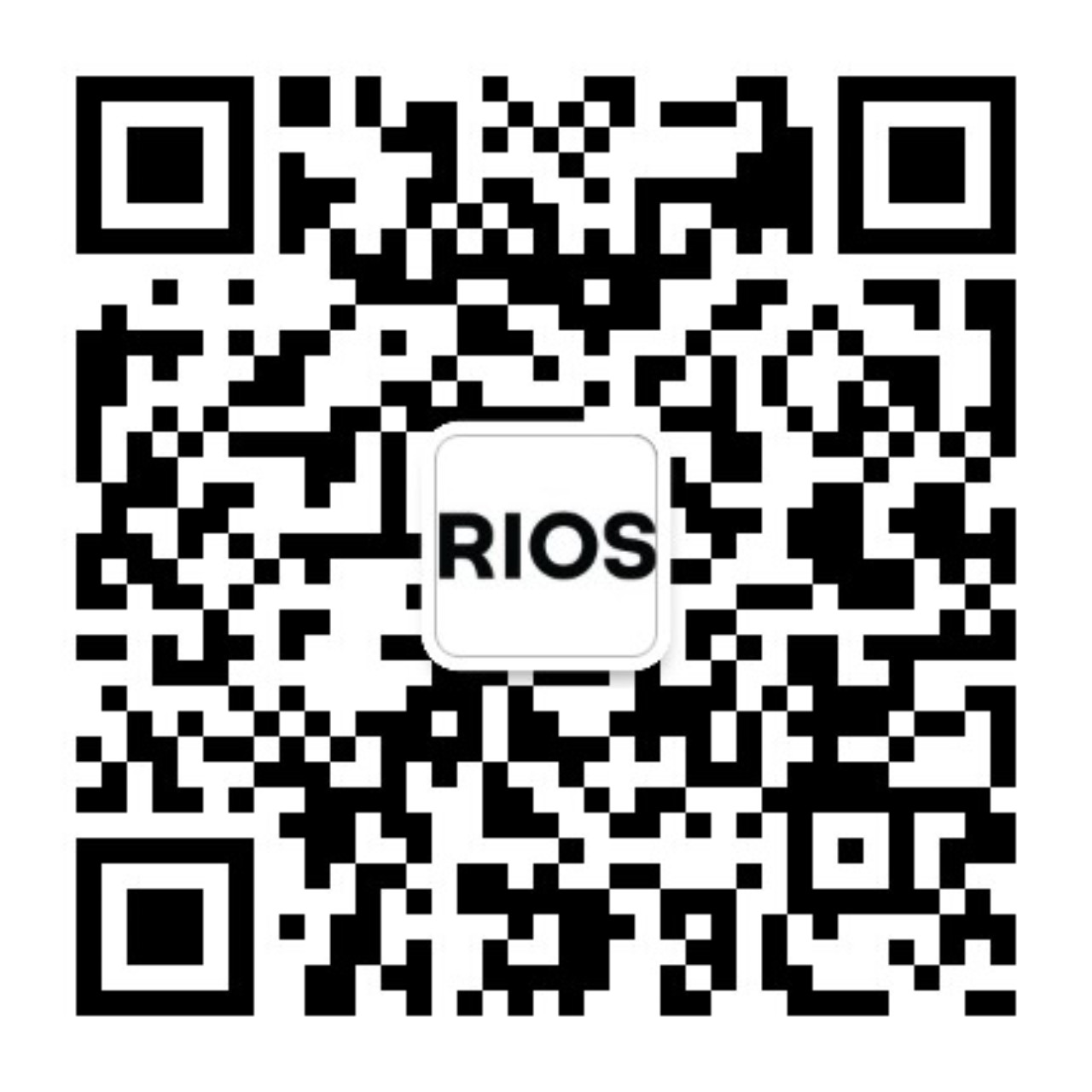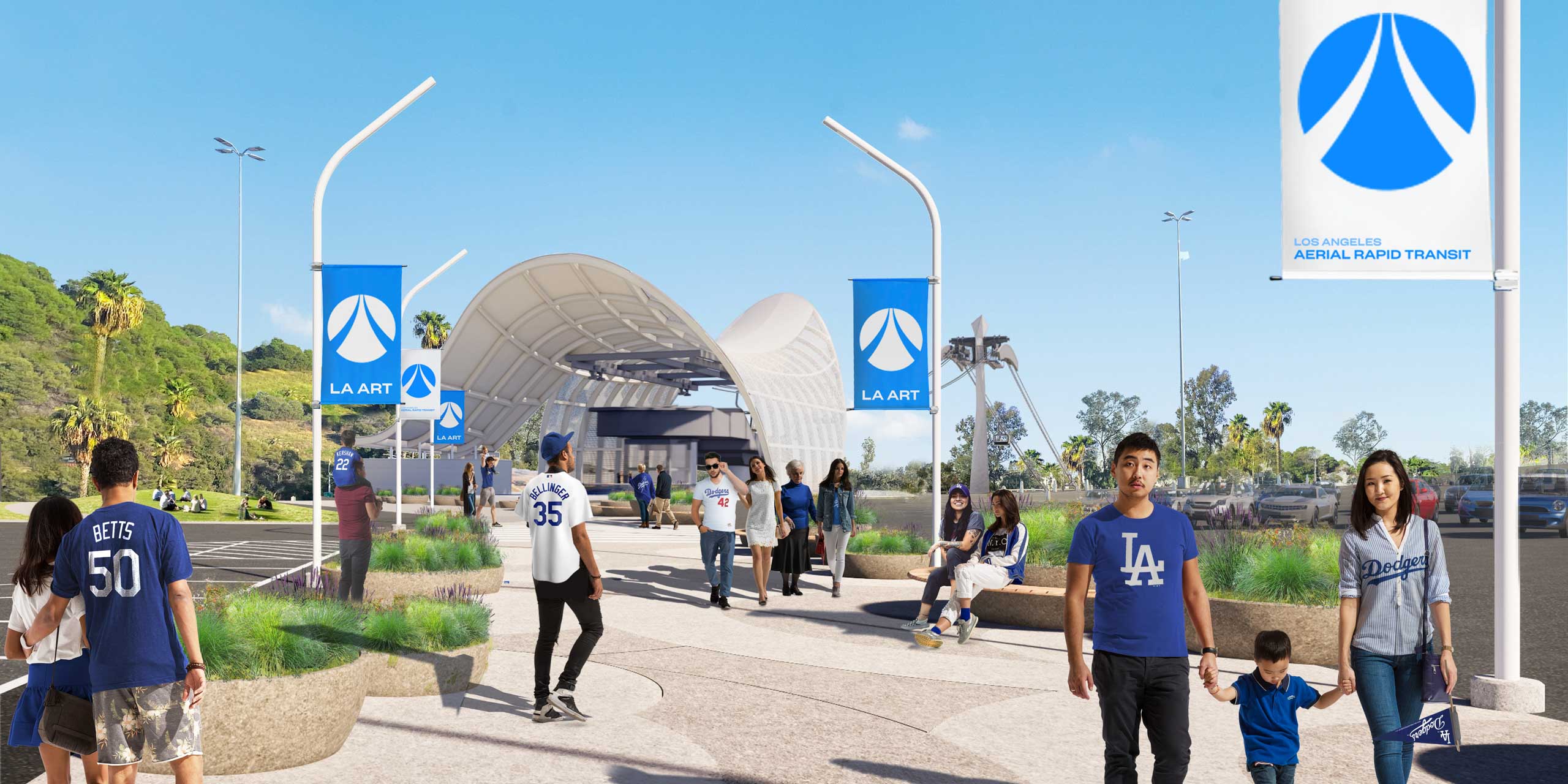
Rendering of esplanade to Dodger Stadium with fans
Los Angeles Aerial Rapid Transit (LA ART)
A View to the City of the Future
Taking a ride on the ART system in a gondola high above the city will give passengers never-before-seen views of the historic center of Los Angeles. At the same time, each station, junction, and tower along the route will touch down in unique and varying urban conditions, from the compressed pedestrian bustle of El Pueblo to the open hilltop views at Dodger Stadium.
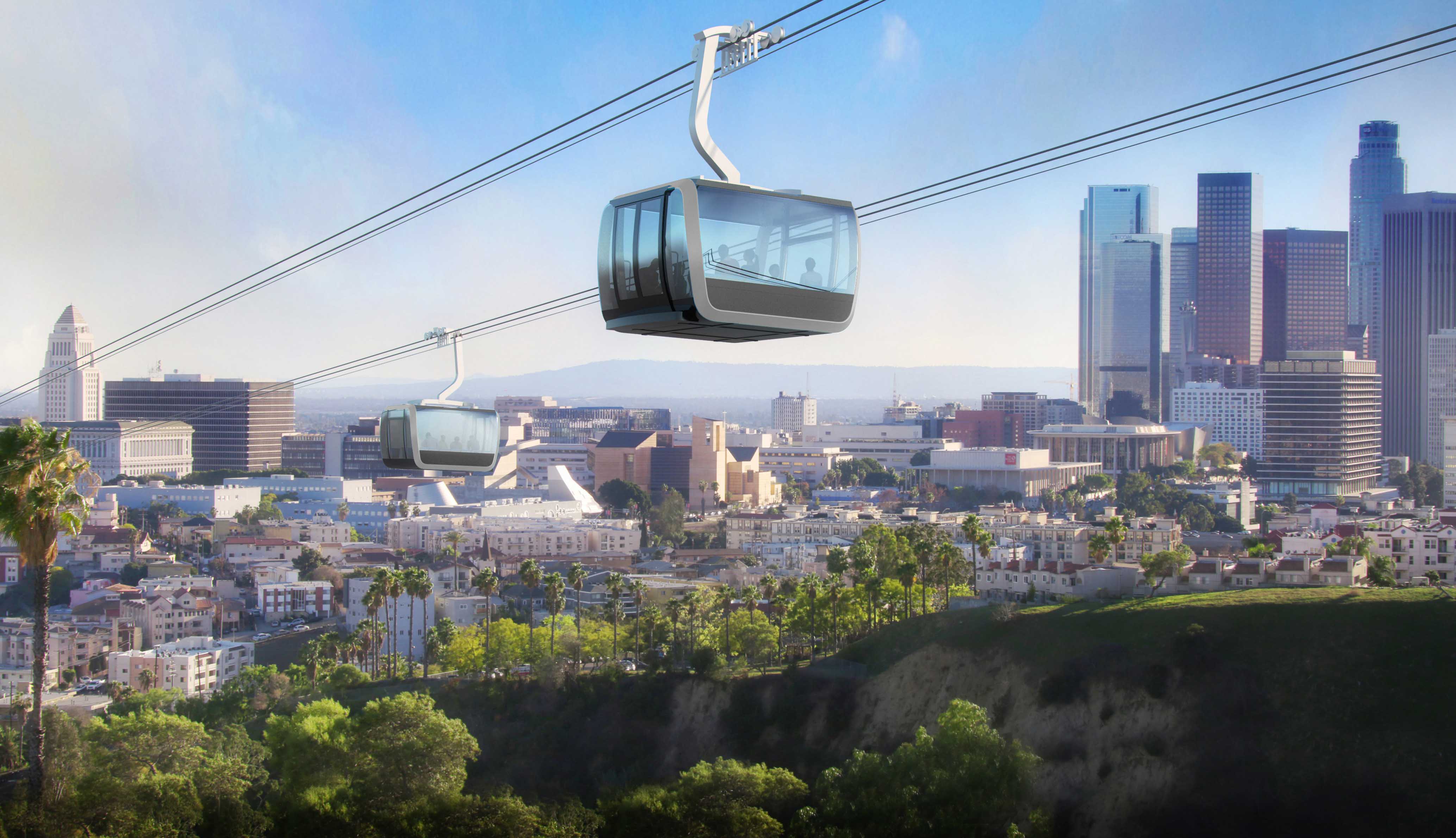
Rendering of cabin with downtown skyline
The experience of riding in a gondola cabin exposes passengers to curated views of the city as a celebration of Los Angeles.
The design goal is to develop a common architectural language that unifies the overall system while allowing for a customized connection at each site so that each ART component can contribute in a positive way to the respective local urban condition. The overall system has an opportunity to reconnect neighborhoods, reactivate adjacent public spaces such as the Placita de Dolores, and act as a laboratory for the future of our city.
System Design
A simple barrel vault form is utilized at the stations and junction to create a unifying formal language for the LA ART system. Constructed from a contemporary HSS steel structure and metal panel assembly allows for the introduction of a custom perforation pattern at each location that can take cues from the immediate neighborhood culture, while also providing visual lightness to the form. Each station also provides an opportunity for site-specific artwork at the underside of the platform, which can be experienced at the pedestrian right-of-way below. The artwork can be commissioned by local artists and involve content reflective of the unique community culture.
At the Alameda Station, adjacent to Union Station and El Pueblo, the simplicity of the form is expressed in material tones reflective of the adjacent historic structures, allowing the canopy to read as a backdrop when viewed from the historic sites, such as the Avila Adobe. At Dodger Stadium, a sculptural emphasis at each end of the barrel form creates an exuberant and iconic terminus for the system.
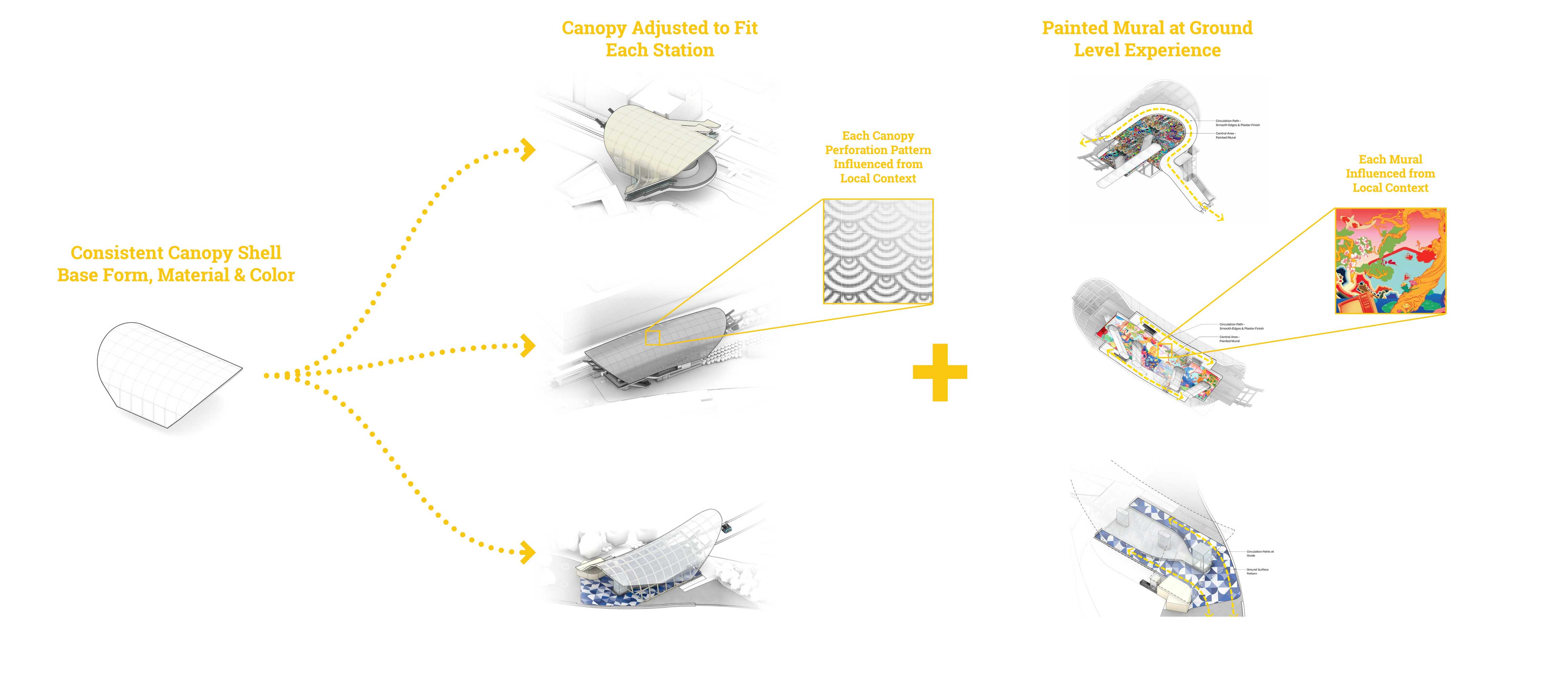
Station Design System Diagram
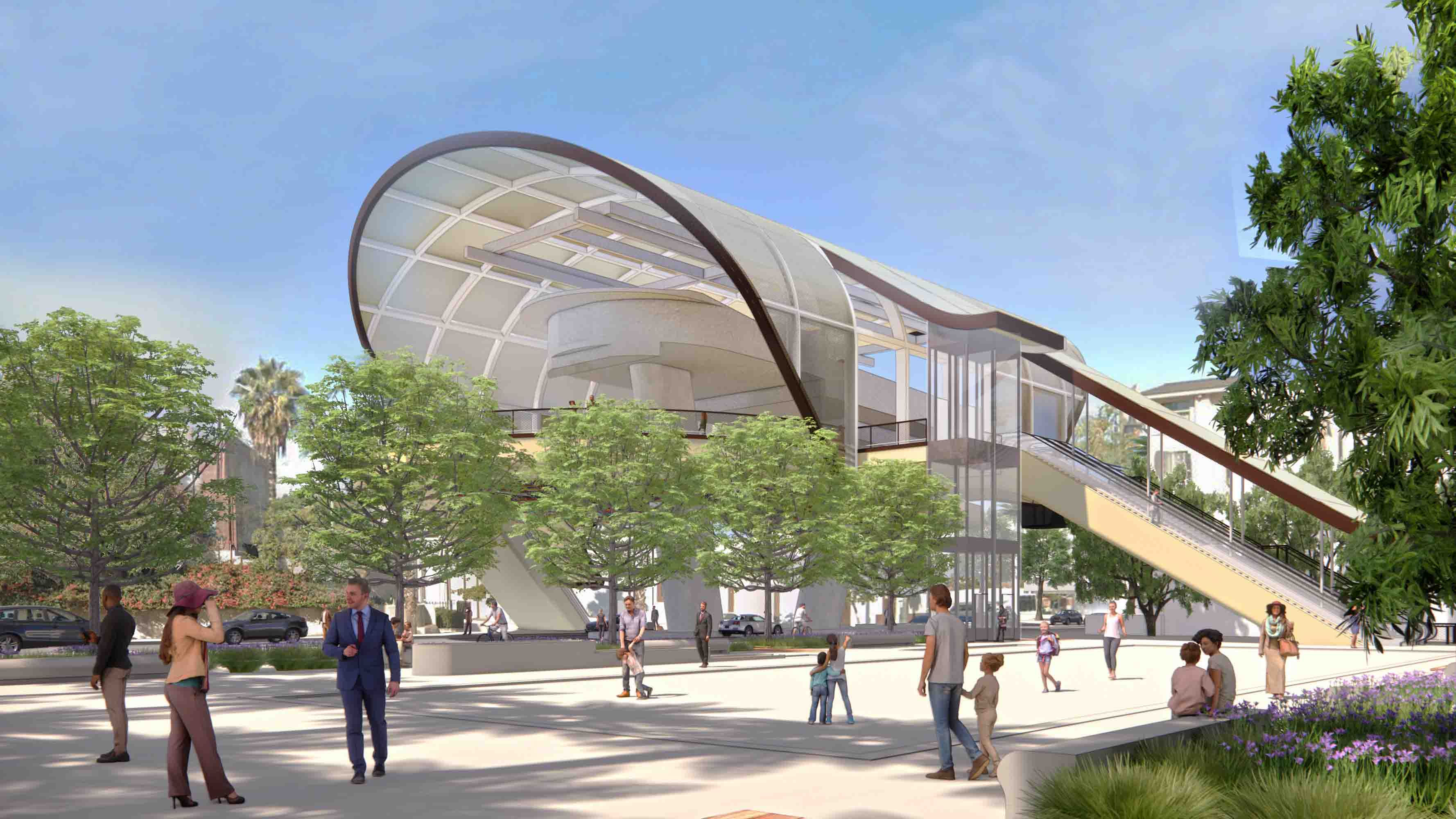
Rendering of LAUS Station from forecourt
Urban Choreography
Traversing the urban landscape, LA ART will reduce congestion in neighborhoods adjacent to Dodger Stadium. Each tower is designed so that the bases do not impede adjacent vehicular and pedestrian circulation while supporting the ropeway aligned above the public right of way. The resulting tower structure gently swoops from its base up to connect to the ropeway, reminiscent of the balance and tension of an athlete in motion or the gentle sway of one of Los Angeles’ palm trees.
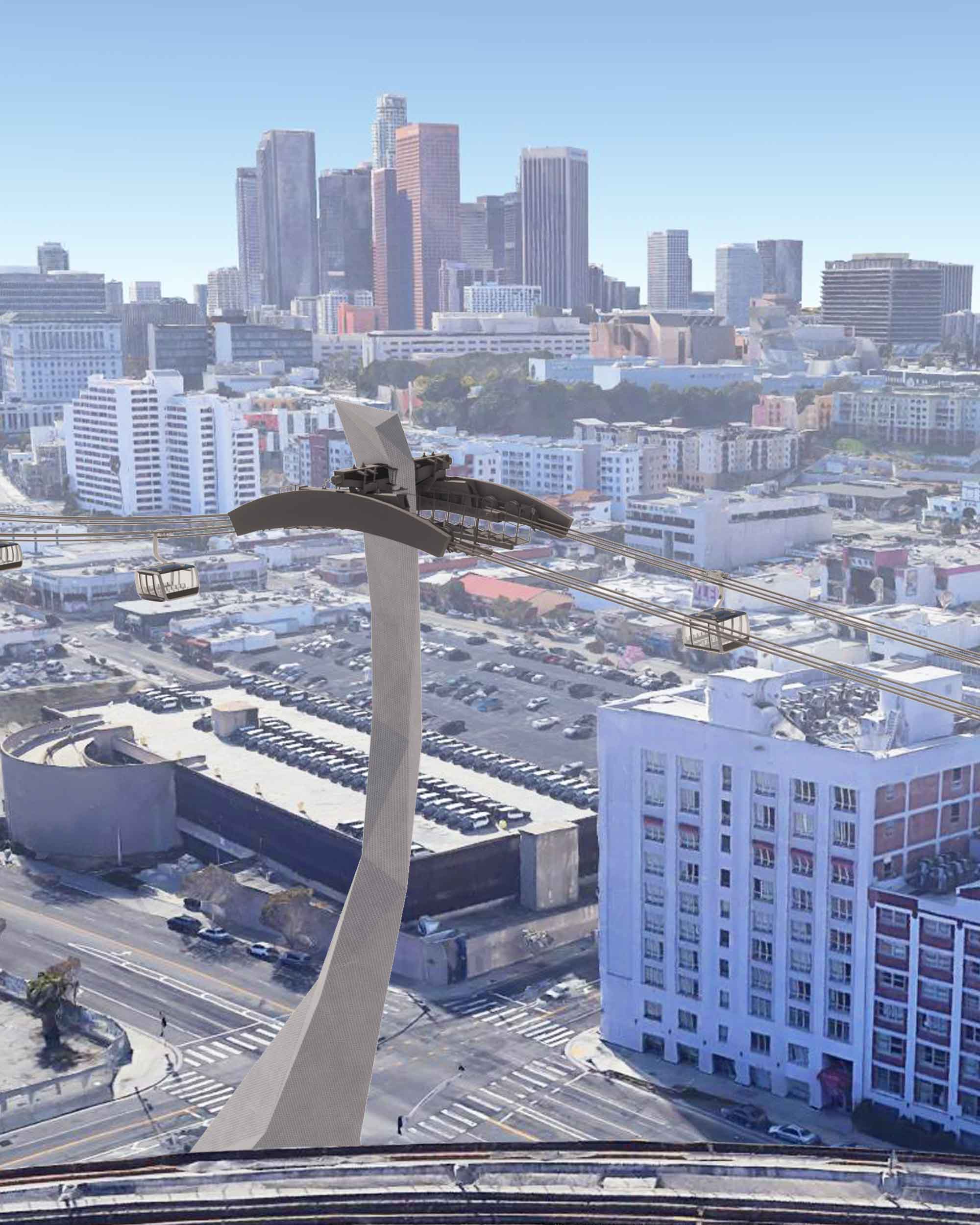
Rendering of Alpine Aerial View
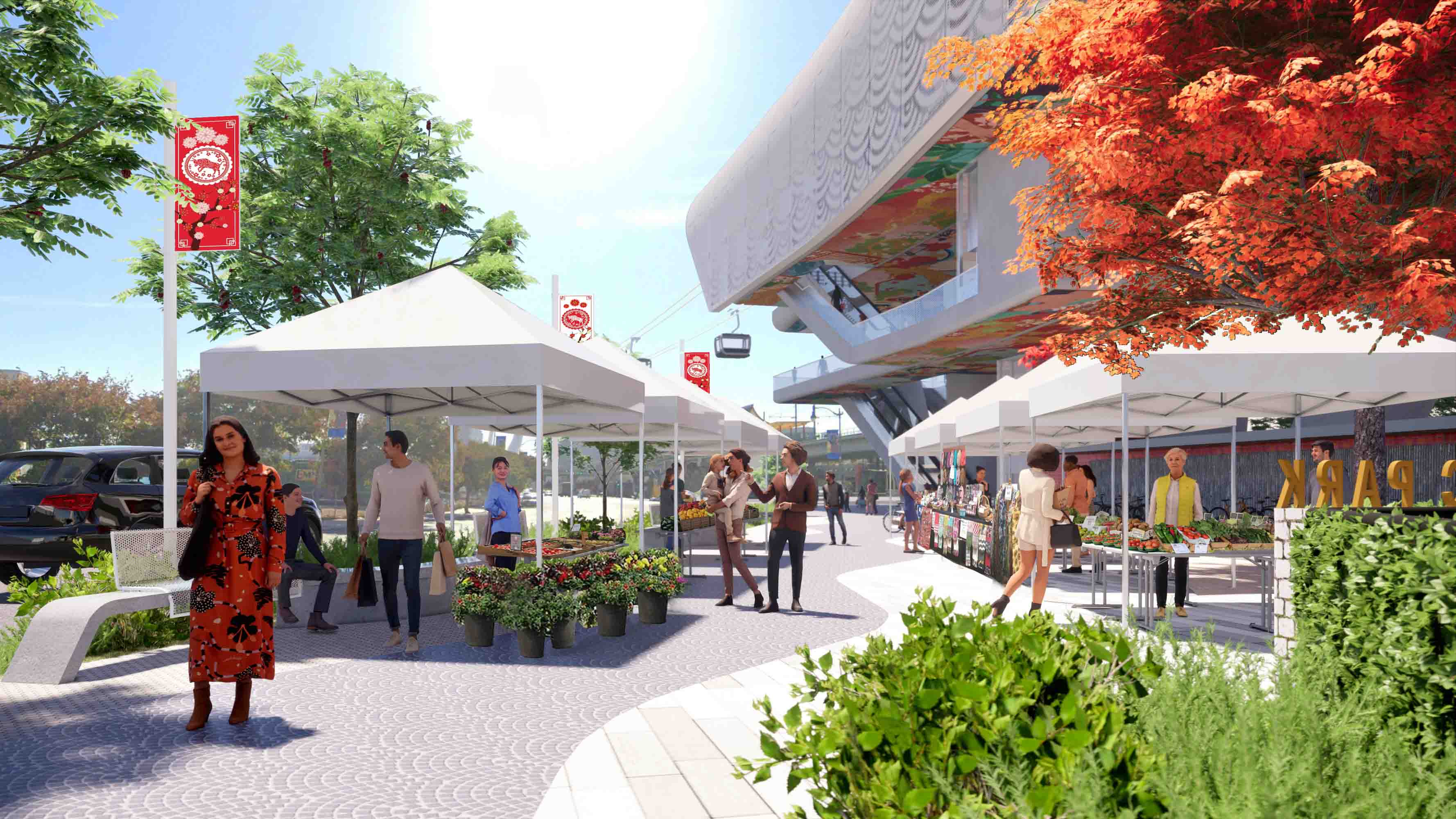
Rendering of Chinatown Station Park Station
A zero-emissions transit system, LA ART provides a unique piece of transportation infrastructure that will reduce greenhouse gas emissions, improving air quality.
Sustainability and Equity
The Los Angeles Aerial Rapid Transit provides a unique piece of transportation infrastructure that will have the immediate effect of reducing traffic congestion on the 110 and in surrounding neighborhoods on game day. At the same time, it has the opportunity to improve community mobility by providing a daily transit option for nearby residences and local schools that are currently underserved, such as Solano Canyon, William Mead Homes, and Cathedral High School. The system will also enhance equitable access to green space with the Chinatown / State Park Station creating a transit link to the Los Angeles State Historic Park.
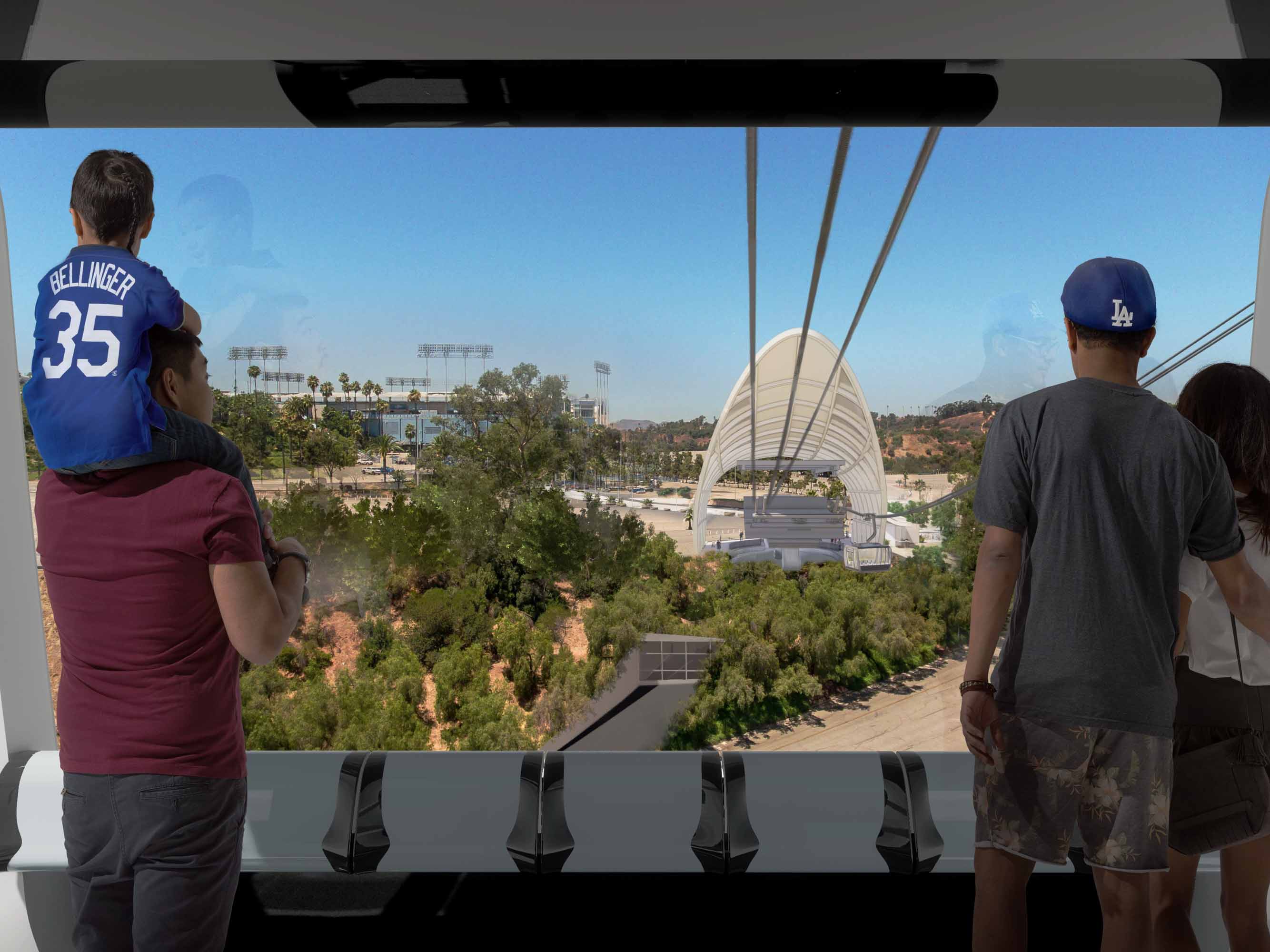
Inside cabin at Stadium Tower looking towards Dodger Stadium
The components of the ART system have been sited primarily within the city right of way, taking advantage of currently developed space and impacting the existing urban fabric with a light touch. Where the system does touch down, the adjacent site design looks to enhance public space and create a more comfortable pedestrian environment through elements that will provide shade and an enhanced landscape. While the system already reduces the use of natural resources and improves air quality by taking cars off the road, the design will also accommodate the future use of renewable energy resources to support operations.
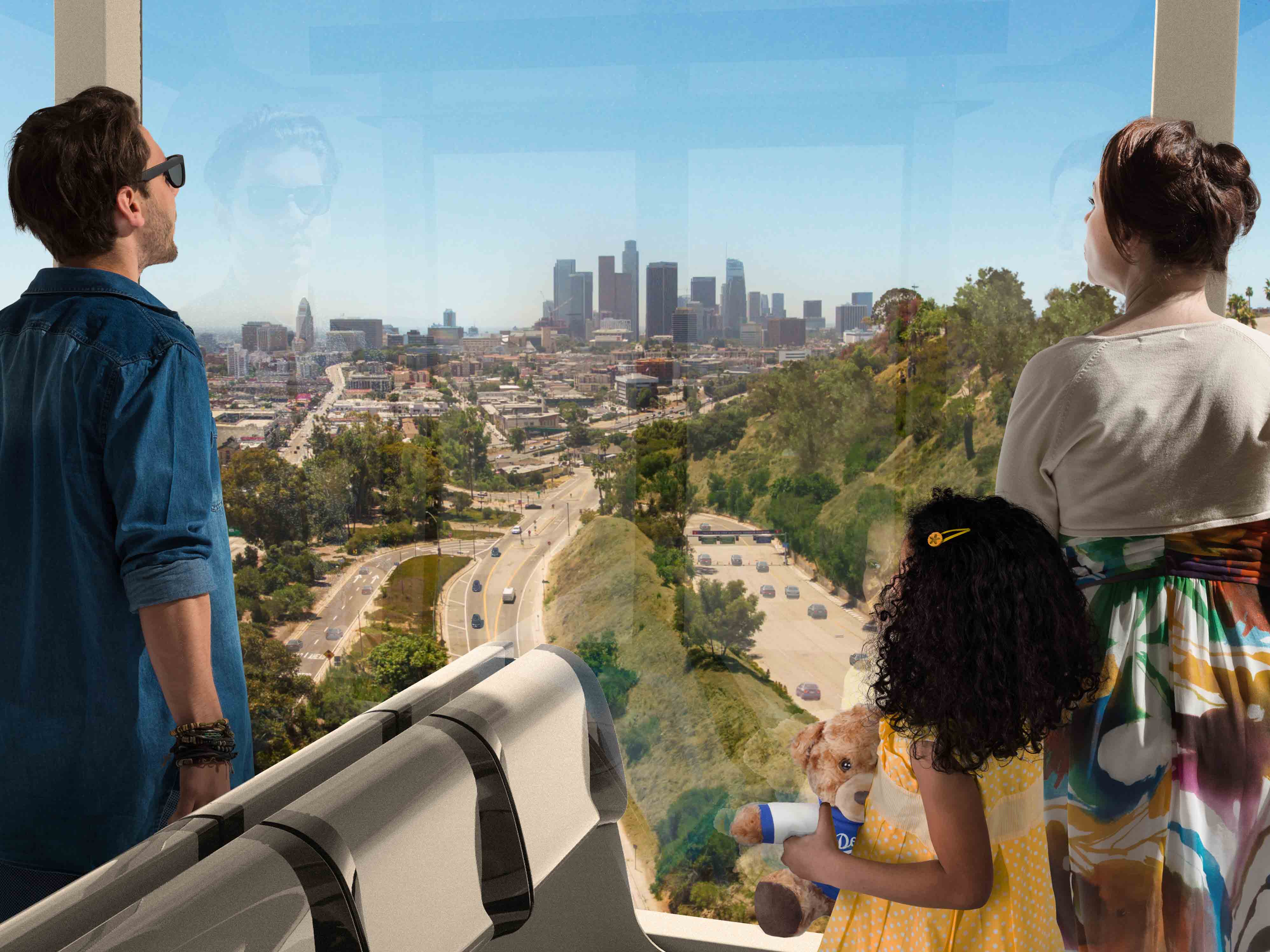
Inside cabin at Stadium Tower looking towards Downtown LA.

